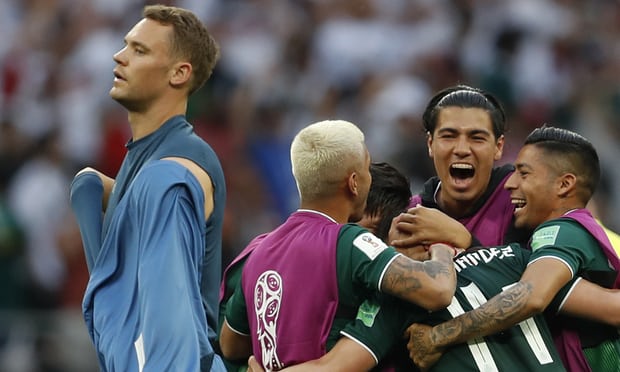World Cup Diary 2
0I hate the VAR. Largely, it has to be said, because I consider myself to be the world’s first-ever victim of it. It just had to be trialled first in the A-League, it just had to be employed first in front of me at Westpac Stadium, and it just had to cost the Wellington Phoenix the game. For goodness sake, it is not as if the Phoenix require any additional outside help to lose games of football.
The Video Assistant Referee system had sat quietly in the corner for the opening two days of Russia 2018. But we all knew and feared that, like an obnoxious dinner party guest, once it finally decided to enter the conversation it was unlikely to be pleasant.
In the opening game of Day 3, Uruguayan referee Andres Cunha promptly turned around and started heading up-field after Australian fullback Josh Risdon had slid across in front of French forward Antione Griezmann inside the Australian box. Griezmann tumbled over but Cunha did not even bother wasting any energy waving away the French cries for a penalty as he headed off. But shortly afterwards he was summoned by a person sitting in a windowless room somewhere to stand in front of a horrible large black thing with a screen in it over on the touchline. This thing looked like one of those old Space Invader machines we all used to crowd around in the old gaming arcades in the 1980s (if you are over 40-years old you will know exactly what I mean; if you are under 40, these machines were an early evolutionary model for what has become today’s Smartphone. Google ‘Space Invader machine’ on your Smartphone and laugh).
The end result was Cunha eventually jogging back towards the Australian box to award a penalty to France. Now, let us just step back here for a minute and assess what happened. Essentially, one marginal penalty decision was replaced by a different marginal penalty decision. The whole exercise seemed a rather pointless waste of time But a pointless waste of time that managed to change the course of the game. Welcome to the pointless-waste-of-time-but game-changing world of the VAR.
At least Griezmann successfully dispatched what was now a twice-disputed penalty. Lionel Messi had no such luck, however, in the next match, between Argentina and Iceland in Spartak’s Moscow arena.
When AC Milan’s Andriy Shevchenko missed his penalty in the 2005 Champions League final shoot-out against Liverpool, I was watching in a lunchroom at my work that was populated with people who knew nothing about football. But most were impressed when the commentator announced Shevchenko as the current European Footballer of the Year as he approached to spot the ball. Many were then wondering quite how the best football player in Europe could possibly be incapable of successfully placing a football from a stationery position into a large net positioned about a dozen yards in front of his face. In Shevchenko’s favour, at least he was only the best player in Europe. I wonder quite what any football novices who happened upon Messi’s failed spot-kick against Iceland thought about the World’s best player also being incapable of performing a task which appears a fairly straight-forward one for a person paid about a trillion dollars a week to play what appears to be a fairly simple game.
But the penalty miss of the day belonged not to the world’s best player but to Peru’s Christian Cueva, in its game against Denmark over in Saransk’s new space-age stadium. The look of utter despair and hopelessness on his face transferred me back almost a quarter of a century to Italy’s Roberto Baggio in the USA 1994 final. It must be a truly sickening feeling to send the entire hopes of a nation wafting skywards. And sadly, Cueva’s miss set the tone for an afternoon of compounding frustration for the poor old Peruvians and their brilliant supporters.
I did not actually expect much from Peru heading into this World Cup. They had been tepid and largely unconvincing in disposing of New Zealand in the play-off matches and looked by far the weakest of the five South American qualifiers. But they brought the kitchen sink with them to Saransk for their long-awaited World Cup return.
Bob Jones once said that you only had to watch the football World Cup to see just how awful most National Anthems are. And he is right. But not every time. Peru’s pre-match Anthem was just stunning and it set the tone for both its players and its supporters. They are an incredibly passionate and proud people and all the pent-up frustration of 36 long years in the World Cup wilderness suddenly spilled out in Saransk.
One problem with the World Cup finals is that, aside from the matches featuring the host nation, most crowds are too quiet. Too many neutrals. But somehow Peru turned this into a home game. The stadium seemed to be packed with them. 3,000 Peruvians had turned up in Wellington for the first leg of the play-off leaving people trying to work out exactly where they had all appeared from. And I was just as baffled as to how 40,000 had now found their way to a place which borders on Siberia. But there they were. And they were loud. This was like a club football crowd – 40,000 home fans with a small patch of a few thousand Danes packed together behind one goal adopting the role of the travelling support.
And the Peruvian players tore into the Danes right from the kick-off with the vociferous backing of their home fans. The largely slow, patient style they had employed against New Zealand was now replaced instead by break-neck football. Peruvians had waited 36 years for this day to arrive and now they were not waiting around for somebody else to make something happen. If only Cueva had scored from the spot.
Because, if he had, you sense that the Danes could have been overrun. As it was, the Europeans had to deal with a series of events in and around their penalty area that often resembled a pinball machine in full flight (if you are over 40-years old you will know exactly what I am referring to; if you are under 40, these machines were an early evolutionary model for what has become today’s Smartphone. Google ‘pinball machine’ on your Smartphone and laugh). But the longer this sequence played out without any tangible result for Peru, the more the feeling grew that the away team would catch the home team on the break and steal the game. Which, of course, is exactly what happened. And when it did, the solid red pocket of away fans behind the goal went crazy; the eyes of everybody else in the stadium involuntarily drawn towards this stark wild movement, gazing at them in stunned silent disbelief.
Despite the tournament having barely begun, there was already a pattern starting to emerge. Teams that were dominating possession, territory and shots were getting beaten 1-0. And it continued the next day when Mexico turned over defending champion Germany. Okay, this was slightly different, in that Mexico was actually good value for its 1-0 half-time lead. In fact, I doubt I have ever seen a better 45 minutes of World Cup finals football from the CONCACAF heavyweight. However, Germany assumed full control in the second half but simply could not find any way through the kind of watertight Mexican wall that Donald Trump could only dream about.
Then Brazil appeared for the first time. Every World Cup is like one of those concerts where there are half a dozen support acts to be endured before the act that everybody has come to see finally appears on stage. It was a little different this time, in that the last time Brazil were on stage they had cataclysmically forgotten their lines, and four years on there remained some genuine concern as to whether they would remember them this time.
The first half hour was fantastic. Brazil took control, bossed possession, moved both on and off the ball with that famous Samba swagger, and duly opened the scoring with a cracking Philippe Coutinho goal. Brazil does not do messy tap-ins from close range. It was, well, just like watching Brazil. Thank God.
But then they inexplicably forgot their lines again. And it was just like watching Switzerland. In the end I was relegated to hoping for a messy tap-in from close range. But they could not even manage that.
If the events of the first four days are to be any guide, then this year the golden lady of FIFA could be heading home with just about anybody.
Follow Euan on Twitter

